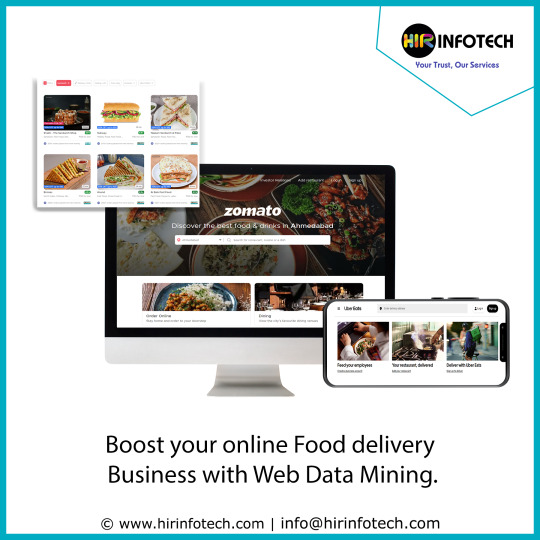#UberEatsdatascraper
Explore tagged Tumblr posts
Text
Optimize your strategy with precise data extraction using UberEats
Gain insights into menus, pricing, and trends for informed decisions and a competitive edge in the food delivery industry. UberEats data scraping enables businesses and individuals to extract valuable insights from the platform, streamlining market analysis and enhancing strategic decision-making.
Know More: https://www.iwebdatascraping.com/ubereats-scraper.php
#UberEatsdatascraper#ScrapeUberEatsdata#UberEatsdatascrapingservices#UberEatsDataExtractor#UberEatsMenuScraper#ScrapeFoodDeliveryDatafromUberEats#ScrapeUberEatsRestaurantData#UberEatsdataCollectionservicea
0 notes
Text
Uber Eats Food Delivery Data Scraping | Scrape Uber Eats Food Delivery Data
'Using Actowiz Solutions Uber Eats Food Delivery data Scraping Services in the USA, UK, and UAE helps you Scrape Uber Eats Food Delivery Data like locations, menus, reviews, ratings, images, etc.
know more: https://www.actowizsolutions.com/ubereats-data-scraping-services.php
#UberEatsDataScraping#ScrapeUberEatsData#UberEatsDataScraper#ExtractUberEatsData#UberEatsDataCollection
0 notes
Text
Uber Eats Datasets – Scrape Uber Eats Food Delivery Data
Get Uber Eats datasets and scrape Uber Eats food delivery data for menu, pricing, and restaurant reviews to fuel your food research.
Read More >> https://www.arctechnolabs.com/uber-eats-data-scraping-services.php
#UberEatsFoodDeliveryDatasets#UberEatsMenuItemsDataset#ScrapeUberEatsFoodDeliveryData#UberEatsMarketTrendsDataset#ScrapeUberEatsUAERestaurantData#UberEatsDataScraping
0 notes
Text
Uber Eats Data Scraping - Extract UberEats Restaurant Menus
Scrape restaurant data locations, menus, and reviews across the USA, India, UAE, UK, and China. Leverage Uber Eats data scraping Services for valuable insights.
Read More>> https://www.fooddatascrape.com/uber-eats-restaurant-data-scraping.php
#UberEatsDataScraping#ExtractUberEatsRestaurantMenus#UberEatsRestaurantDataScraping#UberEatsRestaurantDataExtraction
0 notes
Photo

The online food delivery business needs a huge database to conduct. we'll be helping to scrape appropriate data as per your food business requirements. Like restaurant’s name, address, city, offers, discounts, ratings/reviews, menu images, rates, Delivery Fees, Pickup Fees, Small Order Size fees, and more data.
For more information, visit our official page https://www.linkedin.com/company/hir-infotech/ or contact us on +91 99099 90610
#online food delivery#zomato#ubereats#Webscraping#ubereatsdatascraping#zomatodatascraping#zomatoresturants#foodpanda#hirinfotech#data mining
1 note
·
View note
Text
Uber Eats Data Scraping - Extract UberEats Restaurant Menus
Scrape restaurant data locations, menus, and reviews across the USA, India, UAE, UK, and China. Leverage Uber Eats data scraping Services for valuable insights.
Read More>> https://www.fooddatascrape.com/uber-eats-restaurant-data-scraping.php
#UberEatsDataScraping#ExtractUberEatsRestaurantMenus#ScrapingUberEatsRestaurantData#ScrapeUberEatsFoodMenuRestaurantData#UberEatsRestaurantDataExtraction
0 notes
Text
Uber Eats Data Scraping - Extract UberEats Restaurant Menus
Scrape restaurant data locations, menus, and reviews across the USA, India, UAE, UK, and China. Leverage Uber Eats data scraping Services for valuable insights.
Read More>> https://www.fooddatascrape.com/uber-eats-restaurant-data-scraping.php
0 notes